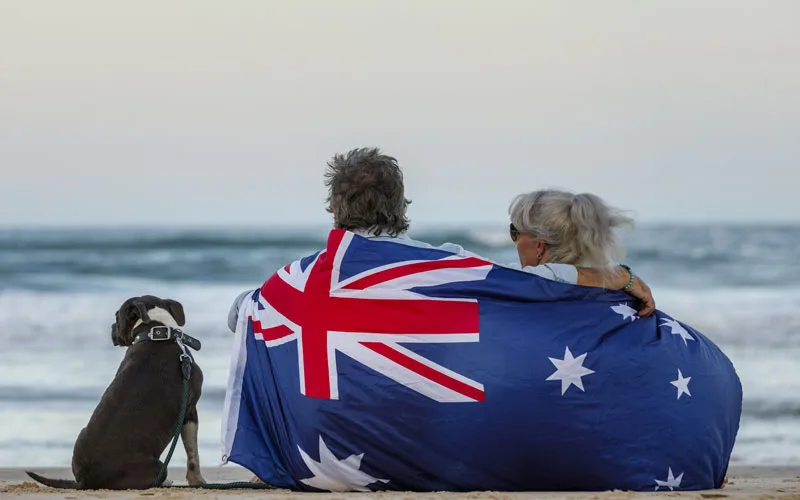On This Page...
ToggleDe Facto Visa Australia – A Guide for Couples
By Nilesh Nandan, Immigration Lawyer
Edited by Anh Le, Immigration Lawyer
On this page
- Overview
- Eligibility & the 12-Month Rule
- Onshore vs Offshore vs PMV
- Evidence You Must Show
- Step-by-Step Application Checklist
- Common Questions
- Book a Consultation
What is a De Facto Visa?
If you are in a committed relationship with an Australian citizen, permanent resident, or eligible New Zealand citizen, you may be able to apply for a partner visa under the de facto stream. This pathway allows you to stay in Australia with your partner and, in time, gain permanent residency.
In my practice, I meet many couples who are unsure whether their relationship qualifies as de facto. This guide explains the rules in plain English, so you know where you stand and how to avoid mistakes that can delay or even sink your application.
Eligibility & the 12-Month Rule
To qualify as de facto, you normally need to prove that you and your partner have been in a genuine relationship and living together for at least 12 months before lodging your application. This is known as the 12-month rule.
Exceptions: If you register your relationship in certain states or territories (like New South Wales, Victoria, Queensland, or Tasmania), the 12-month requirement can be waived. This is a crucial option for couples who haven’t yet clocked up a full year together under one roof.
Beyond the 12-month rule, you must show that your relationship is genuine and continuing. Immigration looks at four key areas: financial, household, social, and commitment.
Onshore vs Offshore vs Prospective Marriage Visa
Here is a comparison of the main visa pathways for couples:
| Type | Where You Apply | Work Rights | Travel Before Grant | Pathway |
|---|---|---|---|---|
| Onshore Partner Visa (820/801) | Inside Australia | Yes, usually (on bridging visa) | BVB required to travel | Temporary (820) then Permanent (801) |
| Offshore Partner Visa (309/100) | Outside Australia | Yes, once in Australia | Must wait offshore for decision | Temporary (309) then Permanent (100) |
| Prospective Marriage Visa (Subclass 300) | Outside Australia | Yes, once in Australia | Must wait offshore for decision | Enter on 300 → marry → apply for 820/801 |
Evidence You Must Show
Immigration wants to see proof that your relationship is genuine. Here are the four pillars:
- Financial: Joint bank accounts, shared bills, joint purchases.
- Household: Living together, shared lease, joint utilities.
- Social: Photos together, statements from friends and family, joint invitations.
- Commitment: Future plans, wills, superannuation beneficiaries.
In my experience, weak evidence in one pillar can be balanced by stronger proof in another — but the more complete your evidence, the safer your application will be.
Step-by-Step Application Checklist
- Confirm eligibility: relationship length or registration.
- Gather documents: passports, identity, police checks, health checks.
- Collect relationship evidence under the four pillars.
- Prepare at least two Form 888 statutory declarations from friends and family. In certain cases, two statutory declarations prepared by Australian citizens or permanent residents will also be required for a valid application.
- Lodge online via ImmiAccount.
- Pay the visa fee (over AUD 9,000 – check current fee).
- Apply for a Bridging Visa if onshore.
- Wait for assessment and respond to any requests from Immigration.
Common Questions About De Facto Visas
What is the 12-month rule?
You must usually show 12 months of being in a genuine relationship and living together, unless you register your relationship in a state that allows this.
How long will my application take?
Processing can range from 12 to 24 months. It depends on the completeness of your application and Immigration’s workload. Check the official processing times.
Do I get work rights?
If you apply onshore, you get work rights on your bridging visa. Offshore applicants can work once their temporary visa is granted.
Can I travel during processing?
Onshore applicants need a Bridging Visa B if they want to travel (only if they hold a Bridging Visa A). Offshore applicants can travel freely until the visa is granted.
What happens if my visa is refused?
You may have review rights at the Administrative Appeals Tribunal (AAT). This is a complex process where legal advice is essential.
Book a Consultation with Me
Partner visas are expensive, complex, and high-risk. A mistake can cost you thousands and months of stress. I can help you get it right the first time. Book a consultation today.
Regards,
Nilesh Nandan
Lawyer Principal | MyVisa Lawyers
https://myvisa.com.au






523 Responses
I am applying for an 820 visa with my Australian partner. I would like to know if these three things will effect getting our visa :
If we have only had an 8 month lease to show, but have lived with both our parents many times on three month visas will this be a problem? Over all we have almost three years of living with each other, but only a lease for 8 months, as the rest was with our parents (usa and australia)and don’t have too much documentation for this at all. We have been together for about 6 years. The second thing is we haven’t had a joint bank account until now (already submitted application) because we thought it wouldn’t make sense until now as we were always going back and forth between the states, aus, and nz. And third, we eloped about 8 months ago, and we don’t want immigration to think we did this for visas because we didn’t. It was because we couldn’t get our families together in a proper amount of time and didn’t want to spend the money on that. We have 6 years worth of photos, texts, and emails, along with evidence of each other spending time with friends and family. Thanks for any feed back! I hope this thread still works here!
The best way to answer this is to share with you my personal experience which is that genuine applicants get approved even though they have the very same problems you have indicated in your question.
What is the core issue is whether you and your partner have been in the genuine and continuing relationship. You obviously have scant or “not ideal” evidence in respect of the three issues you have mentioned above.
Equally you have some very plausible reasons why your supporting material is not as perfect as it could otherwise be.
You can still show that you meet the requirements for the grant of a partner visa based on a defacto relationship. You should use your individual statements as an opportunity for you both to properly and simply communicate to the assessing officer what your relationship is all about and why it is genuine for the requisite period. The supporting form 888s from family and friends should also address the genuineness requirement.
I hope this is useful.
Good luck!
Nilesh Nandan
Immigration Lawyer
Hi there.
I am a British citizen arriving on a 417 visa.
I have been with my Australian Girlfriend for 4 months and from the day i move to NSW we have been accepted on a lease for a place together. With in the first couple of weeks we will be registering our relationship and opening a joint bank account.
My question is this: I will be looking for Regional work in NSW in order to apply for my 2nd year WHV, however if that doesnt work out i am wondering how soon with regards to my 12 month visa being up should we apply for a defacto (820 + 801) visa?
Hi Nilesh,
Thank you for the informative information.
Background:
– My partner and i met and got together in Feb 2018.
– She lives in NYC and I live in Sydney
– Since then we been together for a few weeks every 6-8 weeks either me in NYC or her in Australia, or travelling together. This can all be evidenced via plane tickets, travel documents. During those times we have lived together albeit for only for that time.
– We have plenty of evidence of daily phone calls, joint friends, each other taking turns for paying for hotels etc when we travel, rent cars etc.
– She has now decided to move to Australia to be with me and we are investigating the different options for this to happen.
Question:
– The living together for 12 month condition on the defacto would appear to be an issue. HOWEVER is this negated by Registering a Relationship.
– If we can prove a relationship albeit a long distance relationship and get around the 12 month living clause by the Registering a Relationship would our application for Defacto visa be likely approved?
Thank you in advance.
Hi there,
I am currently on a temporary residency visa subclass 485 which expires in October 2019. I am planning to apply for defacto visa with my partner. We have already registered our relationship in August last year and started living together from November officially. We have our residential lease agreement from December which is is less than a year. We have also organised a joint account a month ago and paying our bills through the account. I was wondering when is the right time to apply for my defacto visa? I would further like to know if I have to apply for any other visa besides defacto visa prior to expiry of my current visa i.e. 485. Please advise further.
Hi Nilesh,
I am about to apply for the 820 partner visa. but have some doubts about whether we are eligible or not. We have been together for over 2 years, I believe we have a strong case (joint bank accounts, rented a house together for a year, travel together, registered our de facto relationship, ect.) our lives are pretty much merged, but…
We both left Australia in September (when my visa expired), we have been traveling for a while and now settled in Mexico (my home country) for 4 months. All this time he has been out of the country, hence not “regularly living there”. Also, he is American but arrived to Australia 8 years ago through a partner visa as well.
His relationship ended over 6 years ago.
Thank you very much for your insight. Looking forward to hearing from you.
Hi Nilesh!
I had a quick question! I am currently on a 457 visa. My partner is a NZ citizen, we have been together 2 years and we have sufficient evidence to lodge a 461 visa application.
I’d like to get off the 457 ASAP as my workplace is in a bad place financially. I know if I apply for the 461, I will have to stick to the conditions of my 457 until it is granted (which can take years).
I wondered if I go onto a BVE, what are the chances of me getting work rights granted, considering I will be losing my salary from my 457? I have been supporting myself in Aus for 5 years and there is no way we could live off my partners wage alone.
If I withdraw my 457 and then I don’t get my working rights, I will have to leave the country. ANY advice you can give would be much appreciated.
Thank you so much in advance!
Hi there,
I have an unusual query. My partner and I just received our Relationship Registry certificate in the mail, but have noticed they made a stupid mistake! They have put my partner’s Place of Birth as: “Pennsylvania, U.S.A, Queensland”. “Queensland” should not be there.
We have been waiting months for this certificate, and we want to apply for our Partner Visa ASAP. Applying for a correction on this document is apparently going to take another month! I am extremely frustrated, as you can imagine, as this is their error. Would it be sufficient for us to submit the application with the error as is, but still apply for a corrected document, and then upload this correction as soon as we receive it? What is your advice?
Thank you SO SO much in advance!
Sarah
Hi Sarah
Yes! Frustrating to get a document that has a mistake.
The immigration laws affecting visa applications for Australia are now quite unforgiving in relation to providing a bogus document or false or misleading information.
In the particular circumstances you have explained above I see no risk whatsoever in you lodging the relationship certificate that you have received.
If you are at all concerned, what you might get to do is indicate in a simple letter (which you might also upload) that there appears to be this particular mistake in relation to the document.
I hope this helps and wish you the very best in your immigration journey.
Nilesh Nandan
Special Counsel
MyVisa® Australia
MyVisa® Lawyers
1300558472